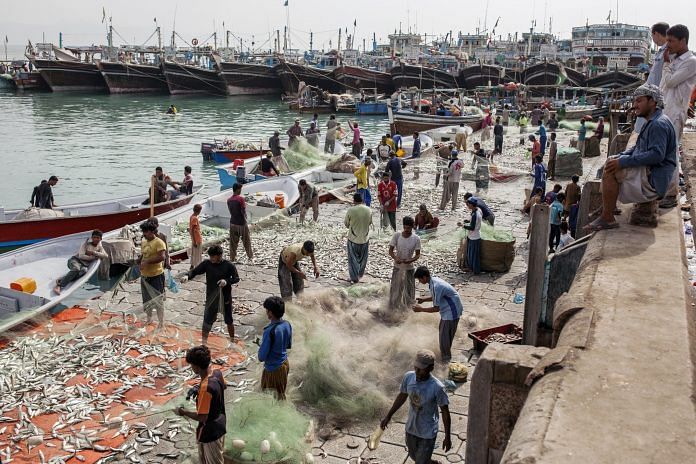Our ocean faces unparalleled challenges—as many as 60% of coastal waterways suffer from nutrient pollution; 90% of wild fish stocks are now overfished or fully fished; and we have lost 85% of wild oyster reefs globally. Climate change is now providing added stress to an ocean already under threat.
Aquaculture – the practice of farming food in the water – is expanding rapidly around the world. In fact, it is now the fastest growing form of food production. The way aquaculture has historically developed, however, has contributed to the challenges the ocean is facing today. For example, we have lost 6,000 square kilometers of mangrove forests in past 20 years. In some areas of Asia, aquaculture has been the major driver and has accounted for 30% of the historical total forest change.
One thing is for certain: we need to figure out how to produce healthy and nutritious food for a growing population without degrading our marine ecosystems. But can we go a step further and create a future where aquaculture grows in a way that contributes positively to ocean health?
We challenge the assumption that food production and environmental health is a zero-sum game.
The Nature Conservancy, as an NGO, and Hatch Blue, as an investor, are aiming to transform the food producing sectors to move towards a global food system which drives the restoration of nature at scale.
We believe that restorative marine aquaculture has the potential to set a precedent for how we can create food systems that benefit nature.
Bi-valves, seaweeds, and other low trophic organisms are unique in their restorative potential. Shellfish and seaweeds produce food with nearly no freshwater, land, or feed—but also have potential to address the challenges our ocean faces by filtering water, removing excess nutrients from our waterways and creating habitat for fish stocks. New research even suggests that seaweed culture has potential to address climate change through carbon cycling, sequestration, and downstream uses which reduce carbon emissions in the farming sector.
The restorative aquaculture approach is already starting to take hold on a global scale. For example, The Nature Conservancy in Belize is working with female entrepreneurs and fishermen to develop seaweed aquaculture that benefits Belize’s precious ecosystems while providing nature-based economic opportunities for coastal communities.
After several years of experimentation and data collection, we are finding that Belize’s new seaweed farms are having a net positive impact on the surrounding environment. Ongoing analysis shows that nearly twice the diversity of fish and invertebrates live around the seaweed farms than nearby control sites. Much to the interest of Belize’s coastal communities and conservationists alike, juvenile spiny lobsters are among the many animals that utilize the farm for habitat, a species that has been in decline in the wild and is relied upon as a source of income for Belize’s fishing communities.
Australian start-up SmartOyster specializes in operational management software and financial support for oyster farmers, making farming more efficient and easier. Oysters and other bivalves, while they grow, filter through large amounts of water removing nitrogen, phosphorus and sediments in the process. Used by many oyster famers in the United States, Australia, New Zealand and other regions, SmartOyster serves as good example of how new technology by one company can help an entire industry to expand and provide valuable ecosystem benefits.
Can we grow the bivalve and seaweed sectors to become a greater part of the food system and restore our ocean at the same time? Can we optimize these types of farming to enhance the benefits they provide to nature and people? Can we develop new business models with a regenerative approach at their core?
To realize aquaculture’s full restorative potential, we need to develop new and innovative farm designs, farm new species, farm in optimal farm locations, and improve farming practices. We need to address barriers to growth of these production sectors, both upstream and downstream of farms with new technologies and product types. But maybe most importantly, we need people with the right mindset and an entrepreneurial spirit to drive the change towards a food production system that benefits the ocean.
This article was originally published in the World Economic Forum.
Also read: New fish farming tech with smart use of water aims to double agriculture incomes



